Electro-Optic Sensor for Measuring Electrostatic Fields in the Frequency Domain
Abstract
:1. Introduction
- non-destructive coupling to the beam’s DC field;
- precise and continuous field measurements;
- compatibility with Ultra-High Vacuum (UHV) and high levels of ionizing radiation;
- optical-fibre-based signal transmission.
2. Method and Experimental Results
2.1. Electric Field Measurements with an Electro-Optic Sensor
2.2. Analytical Model
2.3. DC Measurement in the Frequency Domain
2.4. Choice of Working Point and Modulation Amplitude
2.5. Proof-of-Concept Test Bench
2.6. Possible Sources of Measurement Error
2.6.1. Space Charge Build-Up
- Following Equation (12), the charge build-up and decay depend on the relaxation time of the material and, therefore, on its conductivity. Lithium Niobate exhibits the highest time constant among common EO materials ( s) which in principle allows steady EO conditions in a large time window relative to the measurement time. From Equation (12), the internal electric field in a crystal decays by 1% after almost 17 min.
- Since the build-up of space charge is caused by free charge carriers, it is important to avoid effects which could increase the number of free carriers. The photorefractive effect excites electrons to the conduction band and also leads to a variation of the material’s refractive indices. The rate of excitation depends on the wavelength of the laser beam passing through the crystal. Figure 17 shows the absorption coefficient of doped with manganese at different concentration levels.While some peaks are caused by the used dopant, the remaining characteristic is due to the properties of , showing an almost zero absorption coefficient at 1550 nm.The crystals used in the developed sensor are doped with magnesium oxide and not manganese. However, the lack of literature regarding the energy levels of defects introduced through magnesium oxide doping at wavelengths out of the visible light range suggests that the defects are located only in that range. Therefore, the wavelength of the laser beam chosen for the presented sensor is 1550 nm.
2.6.2. Imperfect Modulation Source
2.6.3. Temperature Drift
3. Conclusions
Author Contributions
Funding
Acknowledgments
Conflicts of Interest
Abbreviations
| EO | Electro-optic |
| DC | Direct current |
| BPM | Beam position monitor |
| SHiP | Search for Hidden Particles |
| WP | Working point |
References
- Duvillaret, L.; Rialland, S.; Coutaz, J.L. Electro-optic sensors for electric field measurements. II. Choice of the crystals and complete optimization of their orientation. JOSA B 2002, 19, 2704–2715. [Google Scholar] [CrossRef]
- Weis, R.; Gaylord, T. Lithium niobate: Summary of physical properties and crystal structure. Appl. Phys. A 1985, 37, 191–203. [Google Scholar] [CrossRef]
- Herres, D. Understanding Electro-Optic Modulation. Available online: https://www.testandmeasurementtips.com/understanding-and-measuring-electro-optic-modulation-faq/ (accessed on 24 July 2022).
- Okayasu, Y.; Tomizawa, H.; Matsubara, S.; Sato, T.; Ogawa, K.; Togashi, T.; Takahashi, E.; Minamide, H.; Matsukawa, K.; Aoyama, M.; et al. The First Electron Bunch Measurement by Means of DAST Organic EO Crystals. Available online: https://jopss.jaea.go.jp/search/servlet/search?5040292 (accessed on 24 July 2022).
- Wu, Q.; Zhang, X.C. Ultrafast electro-optic field sensors. Appl. Phys. Lett. 1996, 68, 1604–1606. [Google Scholar] [CrossRef]
- Shen, Y.; Carr, G.; Murphy, J.B.; Tsang, T.Y.; Wang, X.; Yang, X. Electro-optic time lensing with an intense single-cycle terahertz pulse. Phys. Rev. A 2010, 81, 053835. [Google Scholar] [CrossRef]
- Wilke, I.; MacLeod, A.M.; Gillespie, W.A.; Berden, G.; Knippels, G.; Van Der Meer, A. Single-shot electron-beam bunch length measurements. Phys. Rev. Lett. 2002, 88, 124801. [Google Scholar] [CrossRef] [PubMed]
- Berden, G.; Jamison, S.P.; MacLeod, A.M.; Gillespie, W.A.; Redlich, B.; Van der Meer, A. Electro-optic technique with improved time resolution for real-time, nondestructive, single-shot measurements of femtosecond electron bunch profiles. Phys. Rev. Lett. 2004, 93, 114802. [Google Scholar] [CrossRef] [PubMed]
- Pan, R. Electro-optic Diagnostic Techniques for the CLIC Linear Collider. Ph.D. Thesis, University of Dundee, Dundee, UK, 2015. [Google Scholar]
- Wendt, M. BPM systems: A brief introduction to beam position monitoring. arXiv 2020, arXiv:2005.14081. [Google Scholar]
- Doherty, J. The Electro-Optic Beam Position Monitor; Technical Report; Open University: Oxford, UK, 2013. [Google Scholar]
- Gibson, S.; Bosco, A.; Lefèvre, T.; Arteche, A.; Boorman, G.; Levens, T.; Darmedru, P.Y. High frequency electro-optic beam position monitors for intra-bunch diagnostics at the LHC. In Proceedings of the International Beam Instrumentation Conference, Melbourne, Australia, 13–17 September 2015. [Google Scholar]
- Kuwabara, N.; Tajima, K.; Kobayashi, R.; Amemiya, F. Development and analysis of electric field sensor using LiNbO3 optical modulator. IEEE Trans. Electromagn. Compat. 1992, 34, 391–396. [Google Scholar] [CrossRef]
- Cecelja, F.; Bordovsky, M.; Balachandran, W. Electro-optic sensor for measurement of DC fields in the presence of space charge. IEEE Trans. Instrum. Meas. 2002, 51, 282–286. [Google Scholar] [CrossRef]
- Liu, J.; Wang, H.; Li, Y. Research and Design of Rotary Optical Electric Field Sensor. In IOP Conference Series: Materials Science and Engineering; IOP Publishing: Bristol, UK, 2019; Volume 677, p. 052112. [Google Scholar]
- Miles, R.; Bond, T.; Meyer, G. Report on Non-Contact DC Electric Field Sensors; Technical Report; Lawrence Livermore National Lab. (LLNL): Livermore, CA, USA, 2009. [Google Scholar]
- Ahdida, C.; Alia, R.; Arduini, G.; Arnalich, A.; Avigni, P.; Bardou, F.; Battistin, M.; Bauche, J.; Brugger, M.; Busom, J.; et al. SPS Beam Dump Facility–Comprehensive Design Study. arXiv 2019, arXiv:1912.06356. [Google Scholar]
- Cecelja, F.; Balachandran, W.; Bordowski, M. Validation of electro-optic sensors for measurement of DC fields in the presence of space charge. Measurement 2007, 40, 450–458. [Google Scholar] [CrossRef]
- Jones, R.C. A new calculus for the treatment of optical systemsi. description and discussion of the calculus. Josa 1941, 31, 488–493. [Google Scholar] [CrossRef]
- Schlarb, U.; Betzler, K. Refractive indices of lithium niobate as a function of temperature, wavelength, and composition: A generalized fit. Phys. Rev. B 1993, 48, 15613. [Google Scholar] [CrossRef] [PubMed]
- Yang, Y.; Psaltis, D.; Luennemann, M.; Berben, D.; Hartwig, U.; Buse, K. Photorefractive properties of lithium niobate crystals doped with manganese. JOSA B 2003, 20, 1491–1502. [Google Scholar] [CrossRef]
- Seaver, A.E. An equation for charge decay valid in both conductors and insulators. arXiv 2008, arXiv:0801.4182. [Google Scholar]
- Boccardi, A.; Barros Marin, M.; Levens, T.; Szuk, B.; Viganò, W.; Zamantzas, C. A modular approach to acquisition systems for future CERN beam instrumentation developments. In Proceedings of the 15th International Conference on Accelerator and Large Experimental Physics Control Systems, Melbourne, Australia, 17–23 October 2015. [Google Scholar]

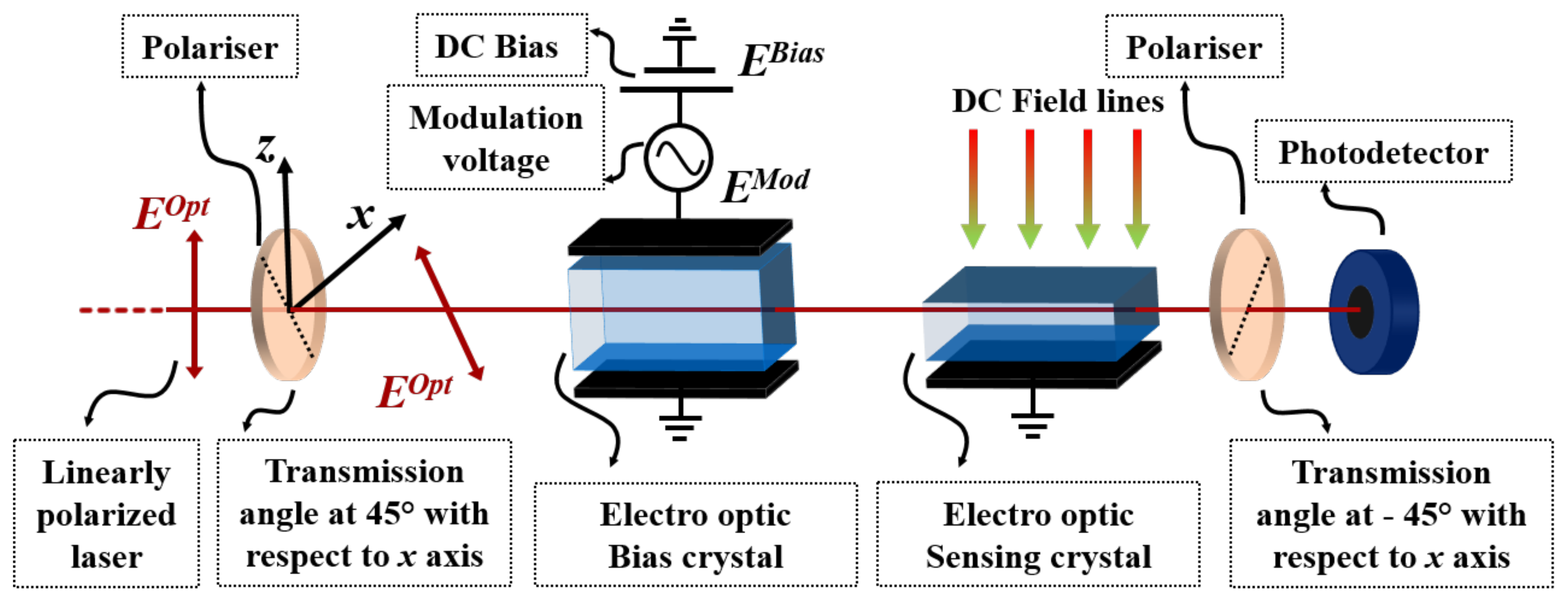
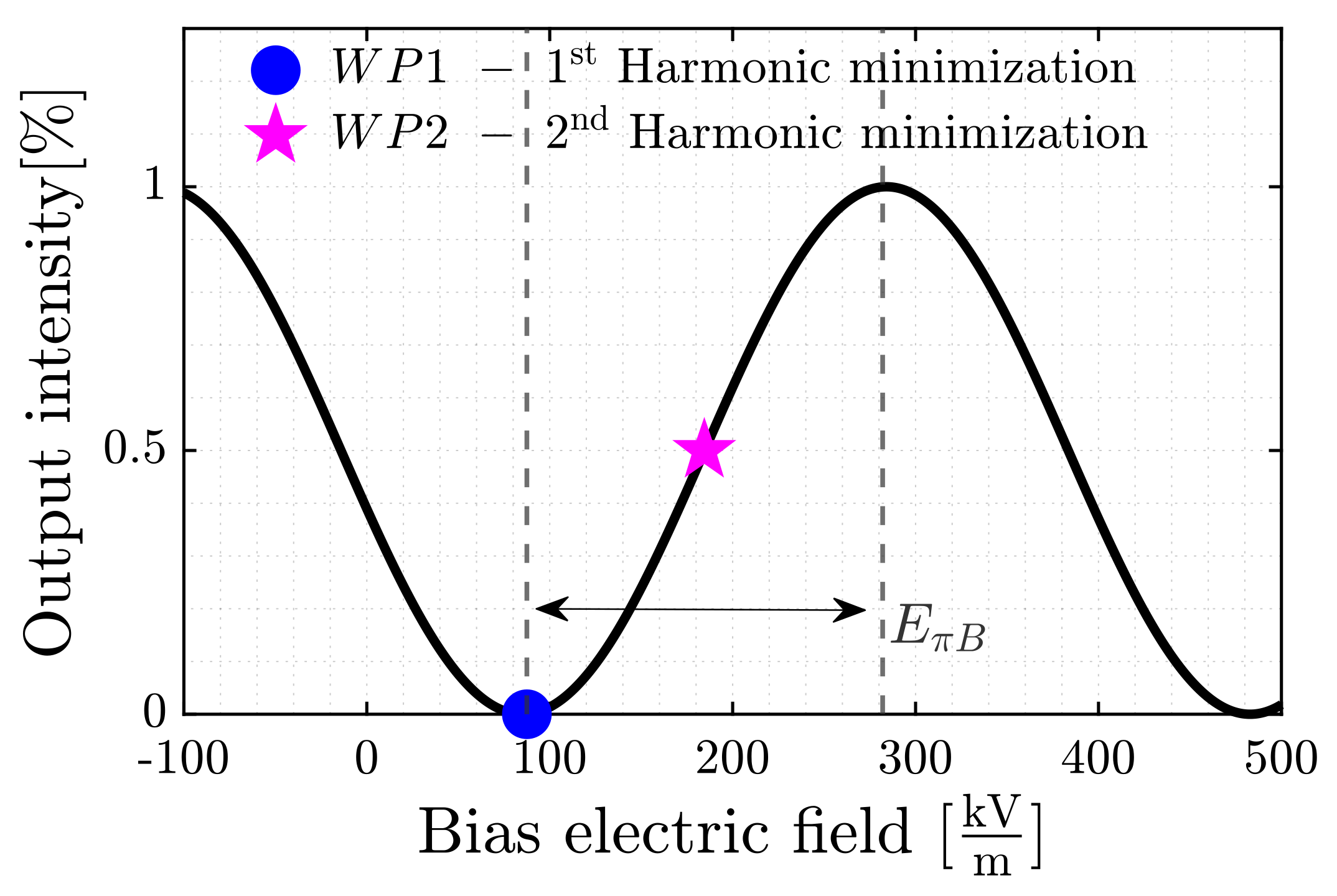
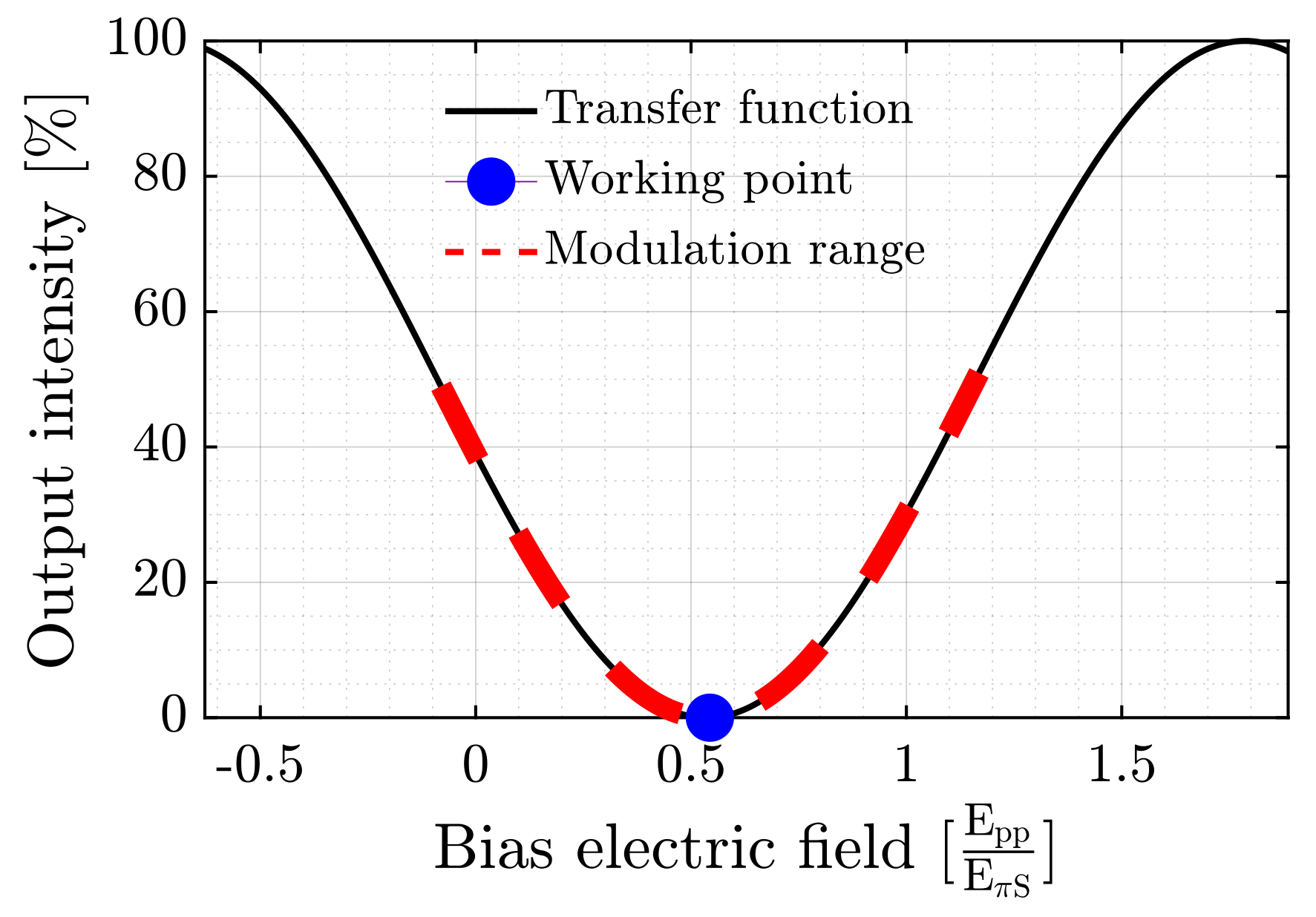

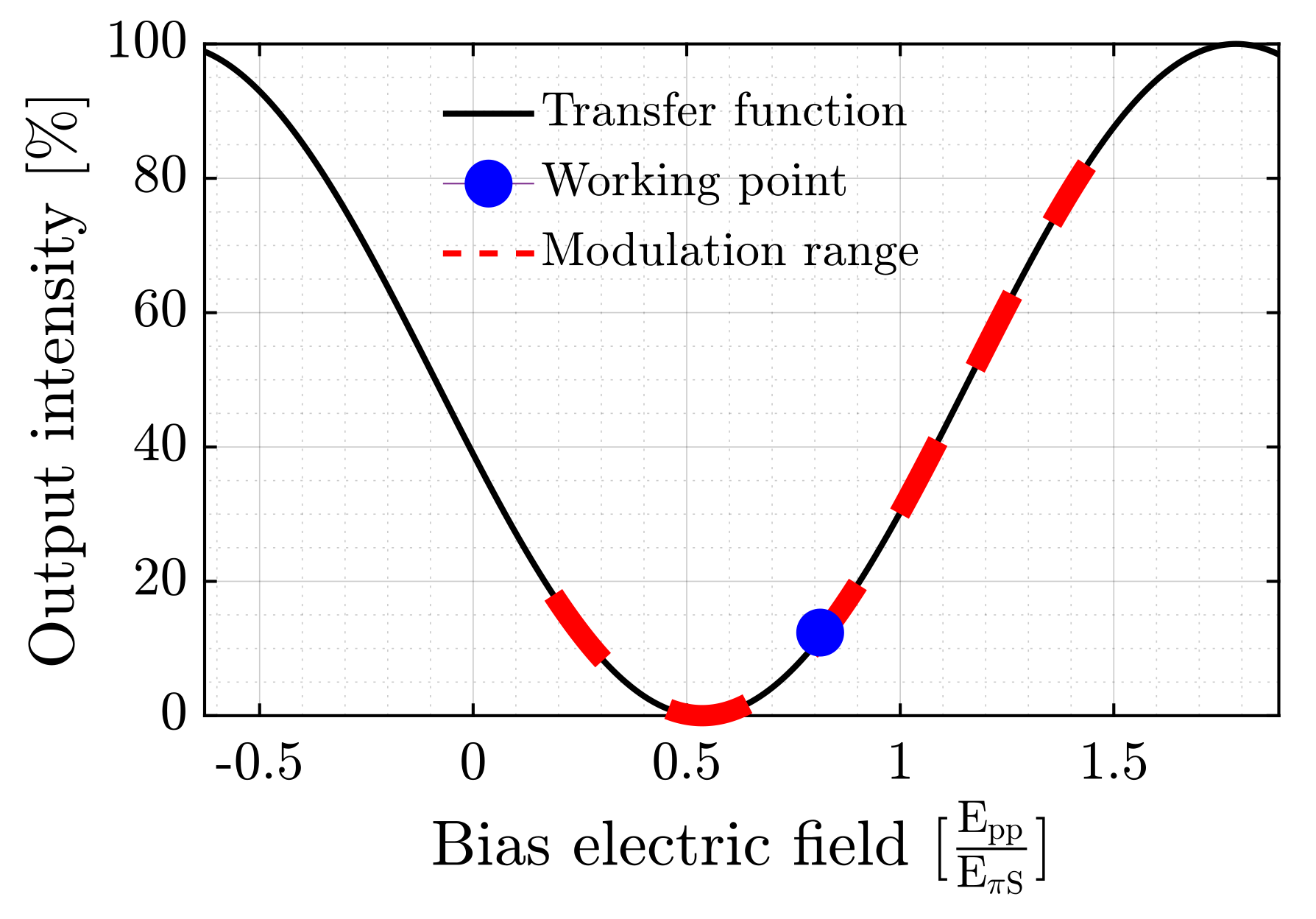
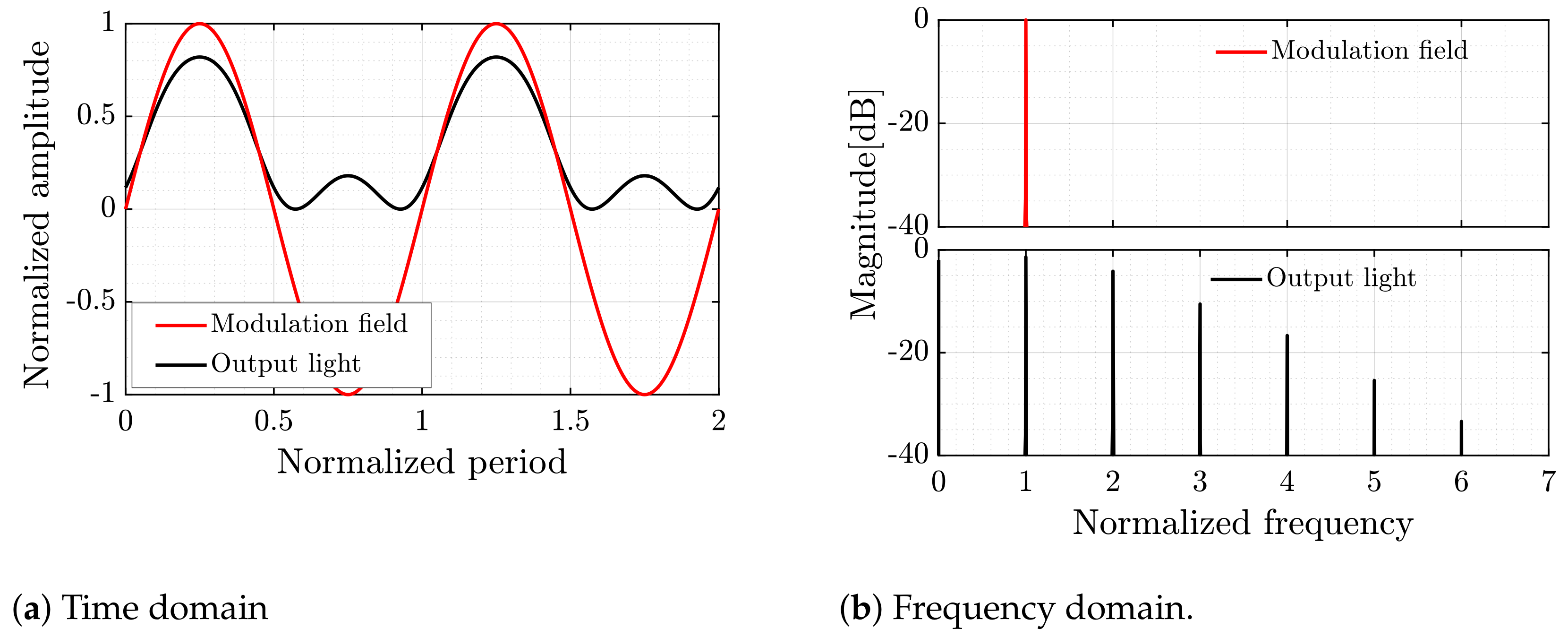
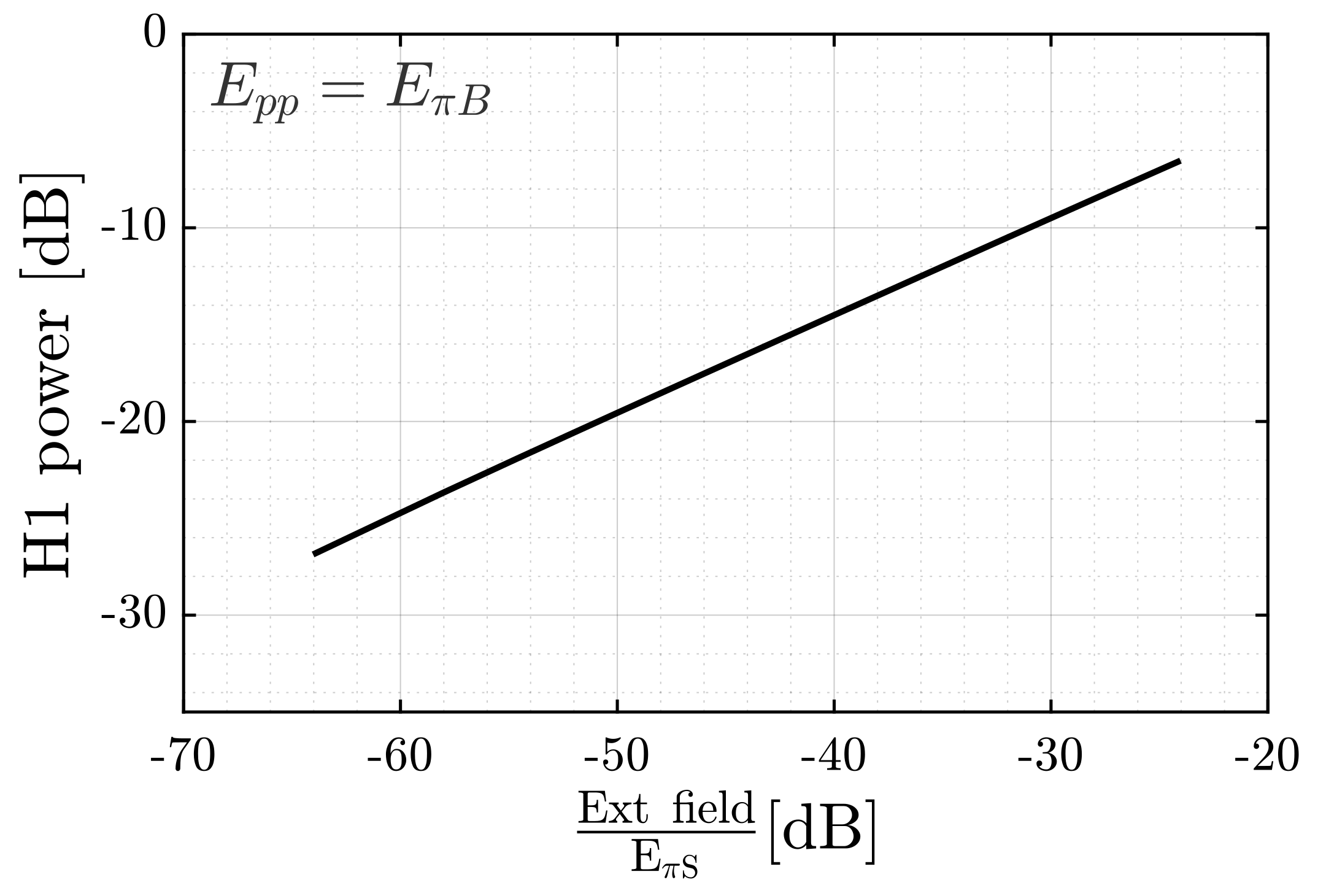
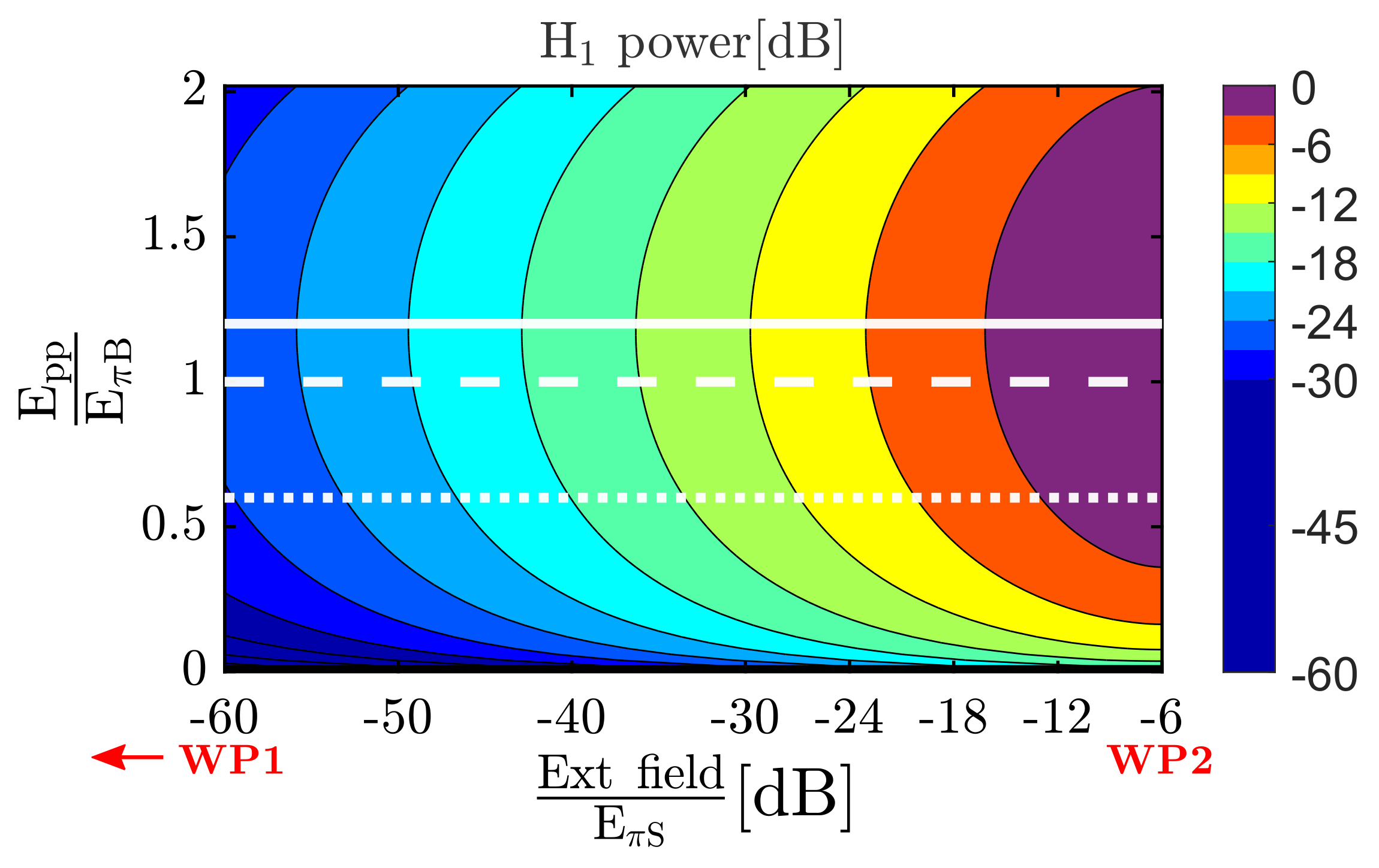

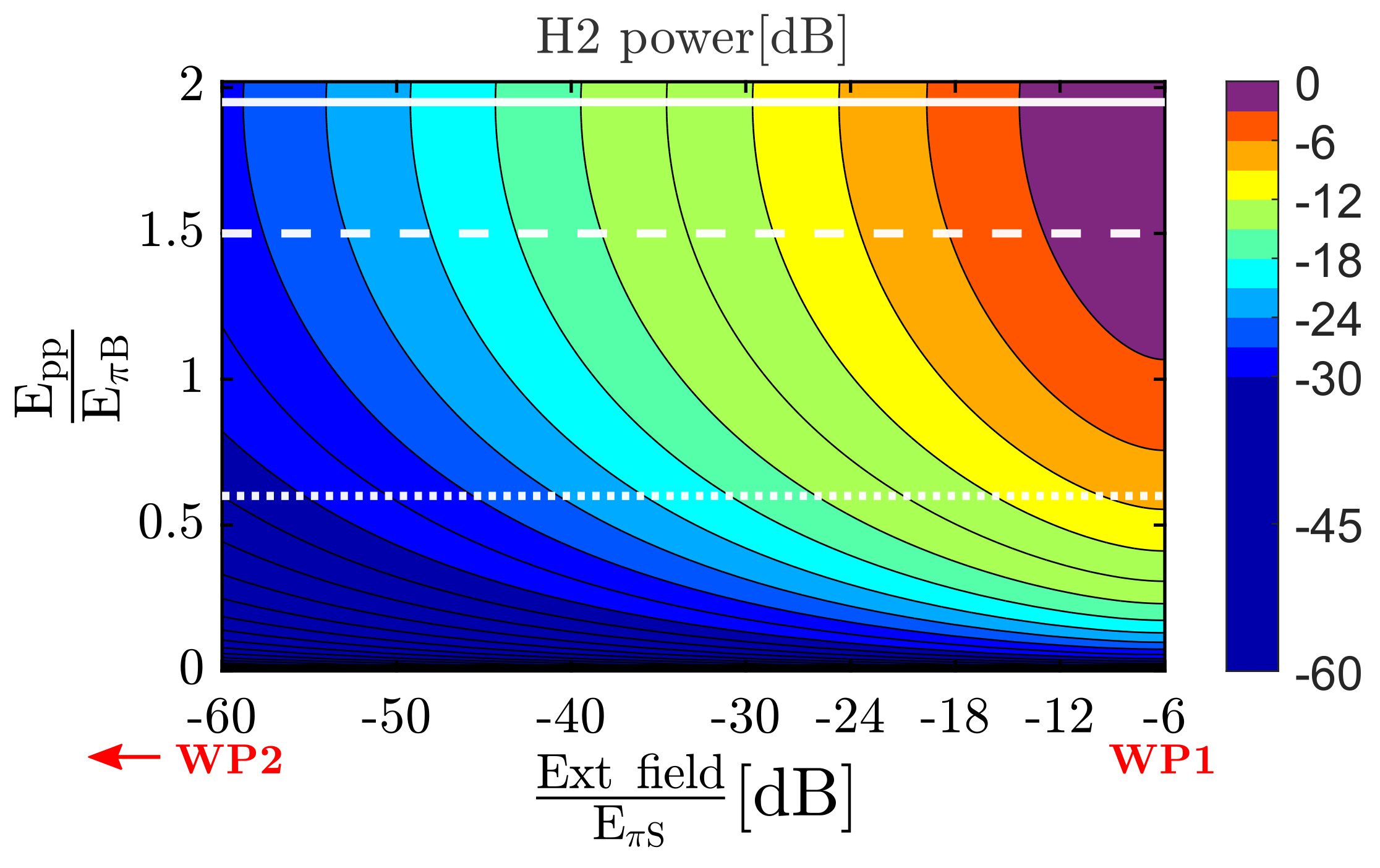
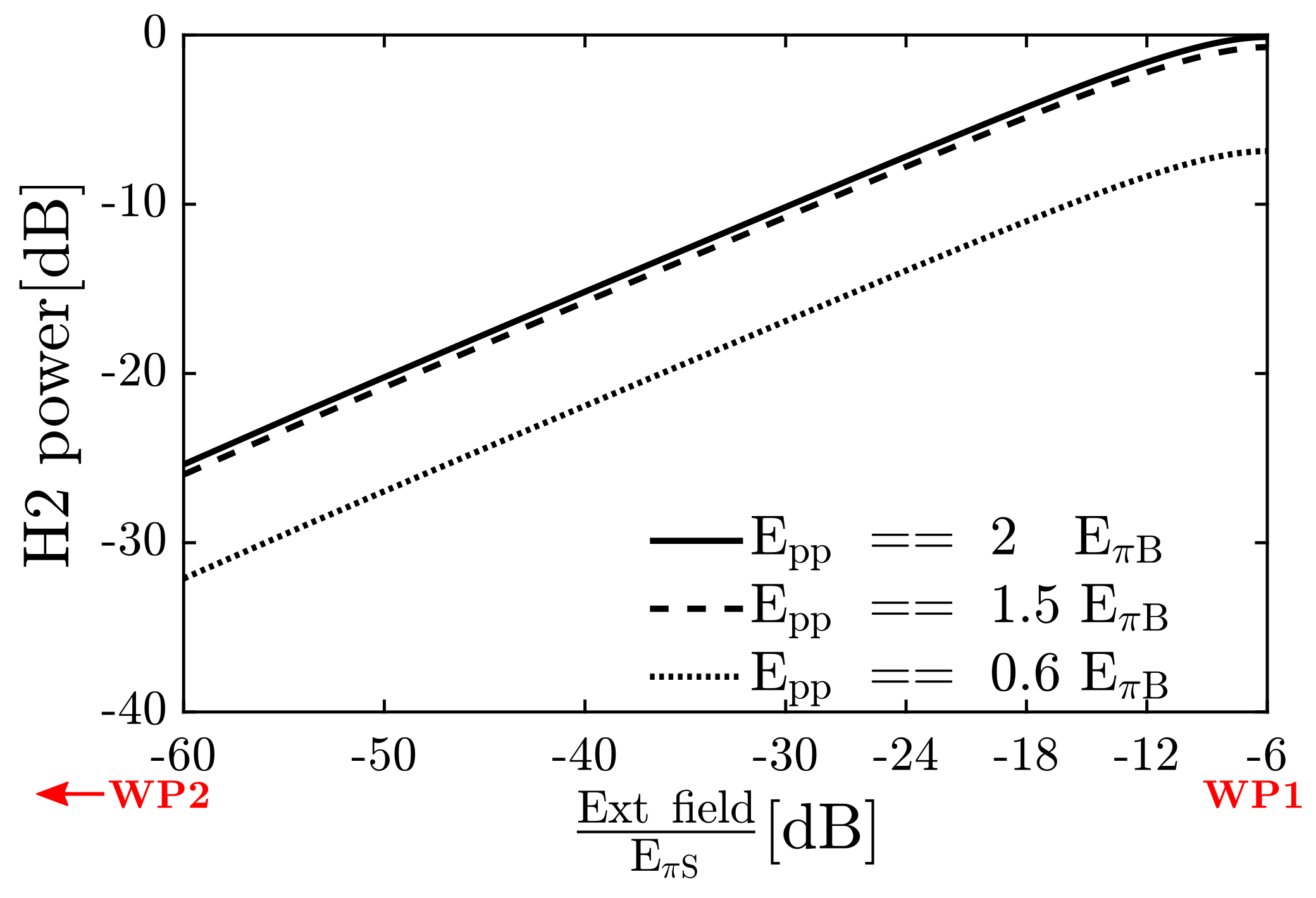

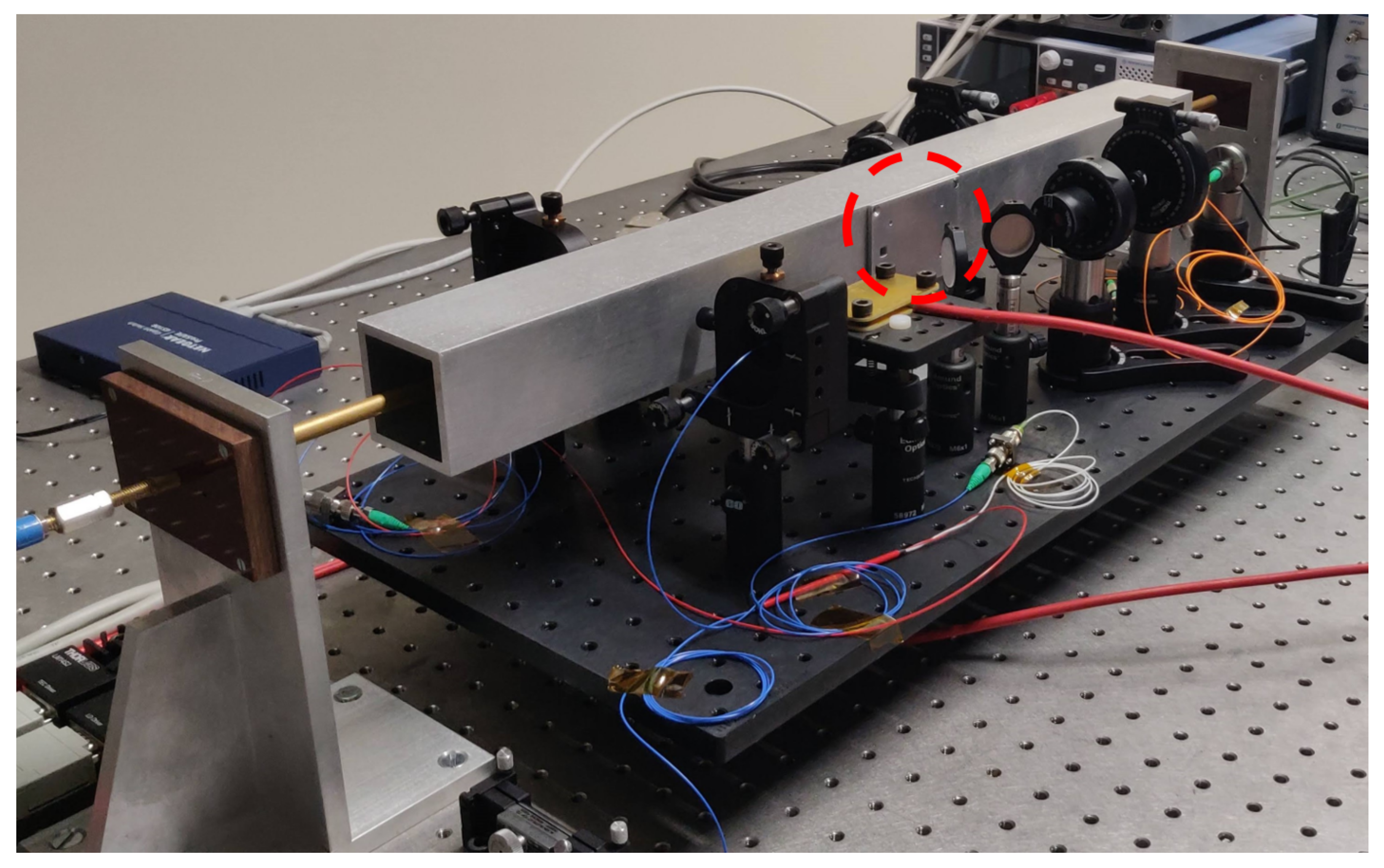

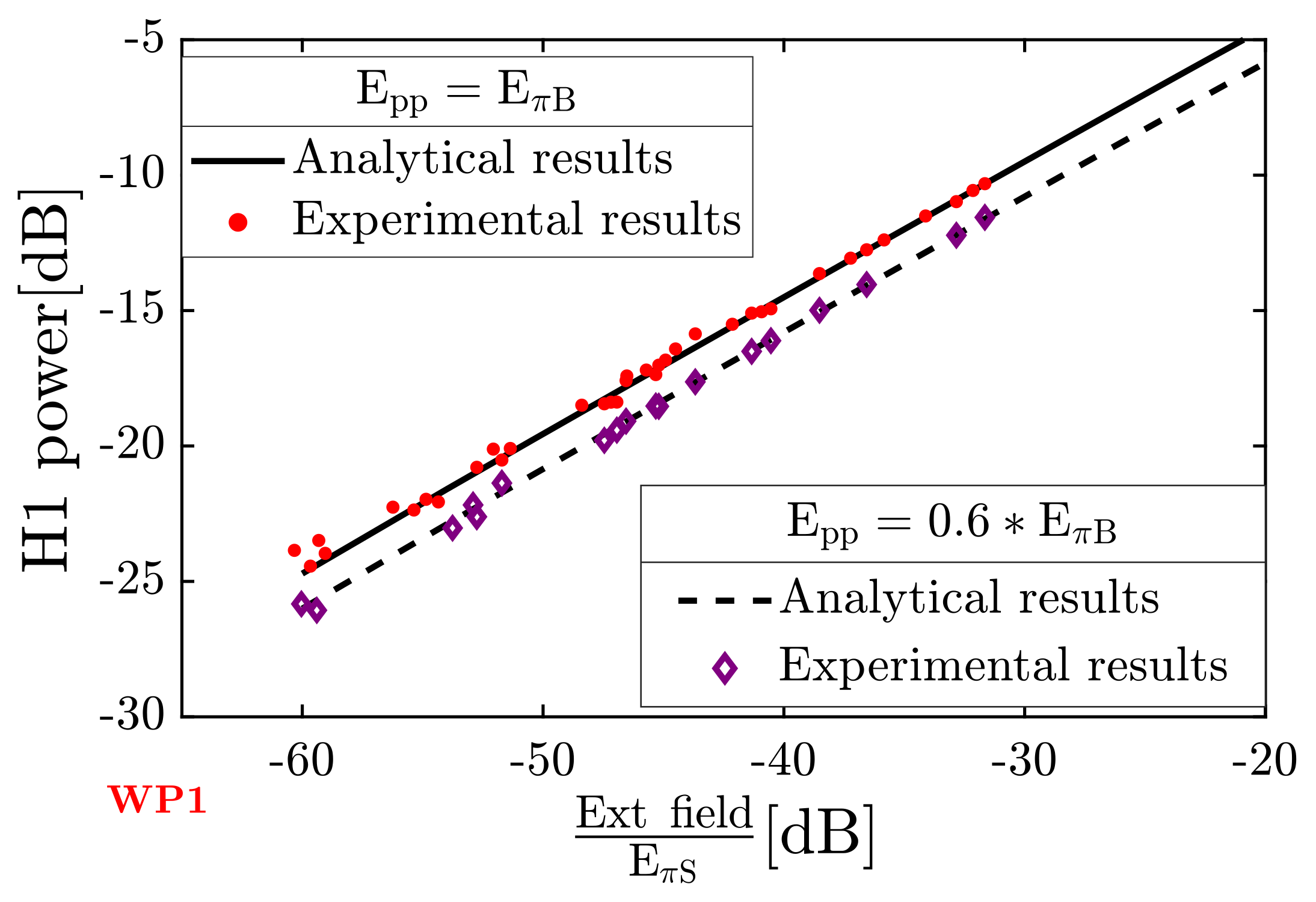
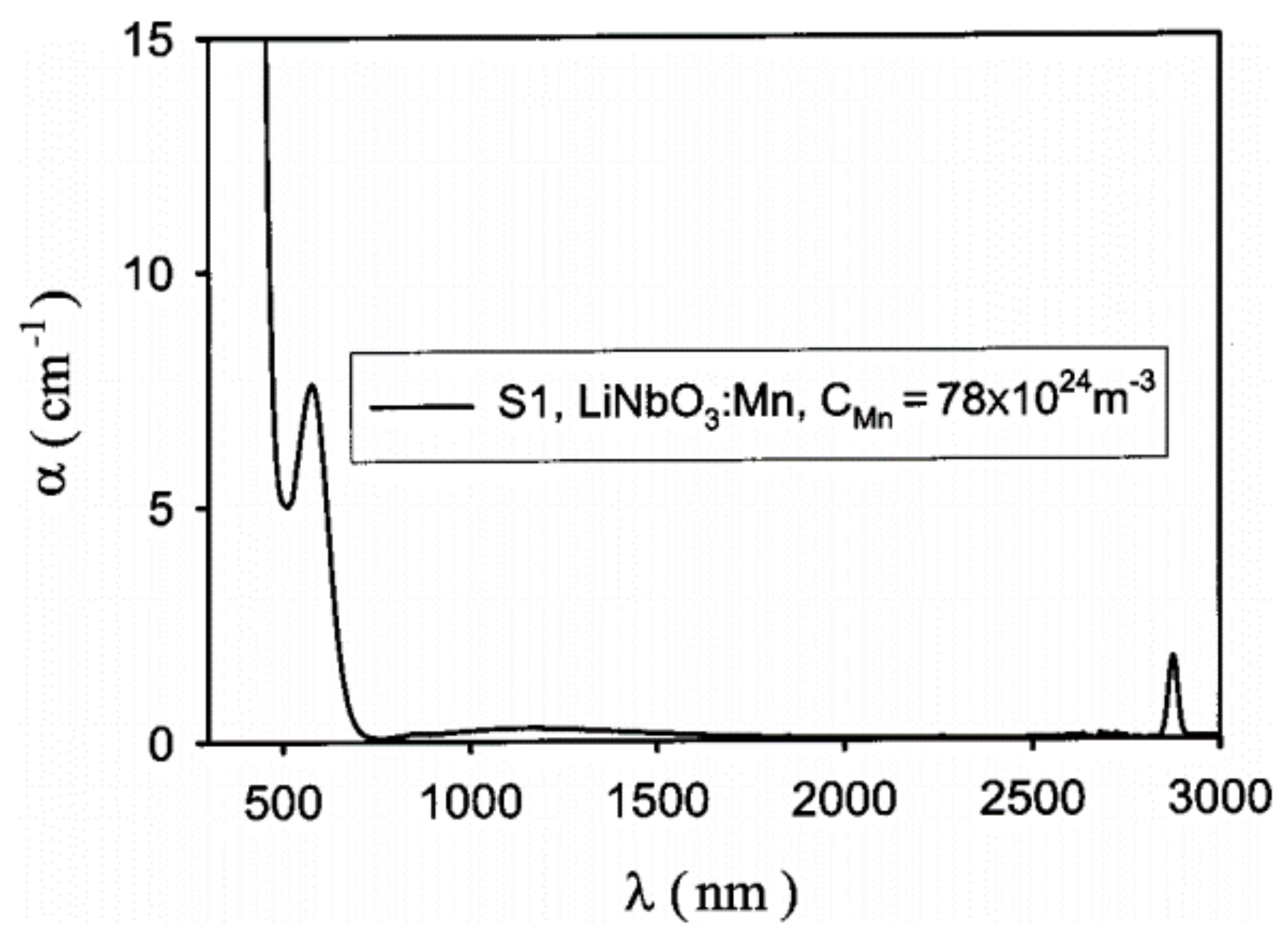
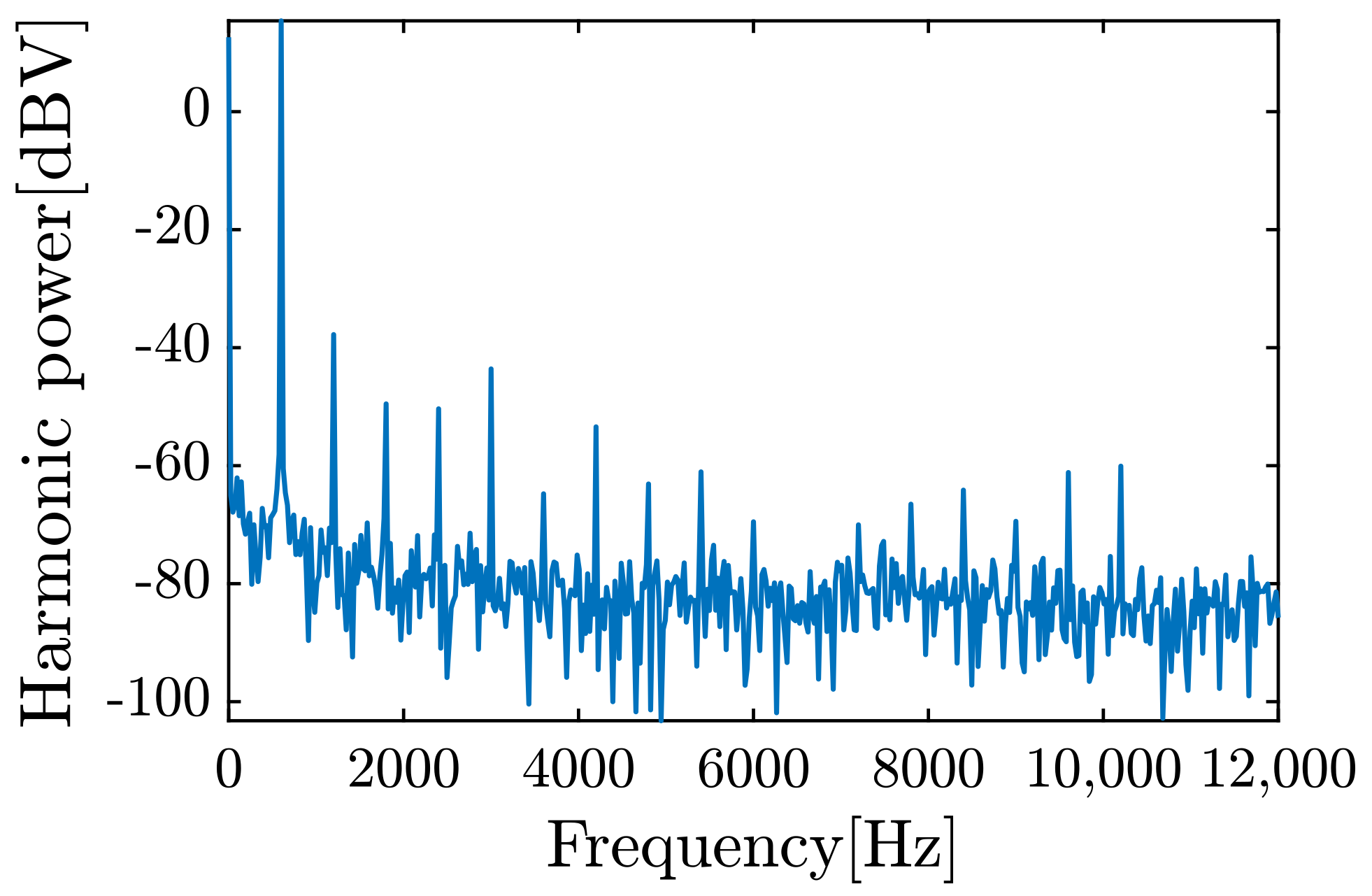
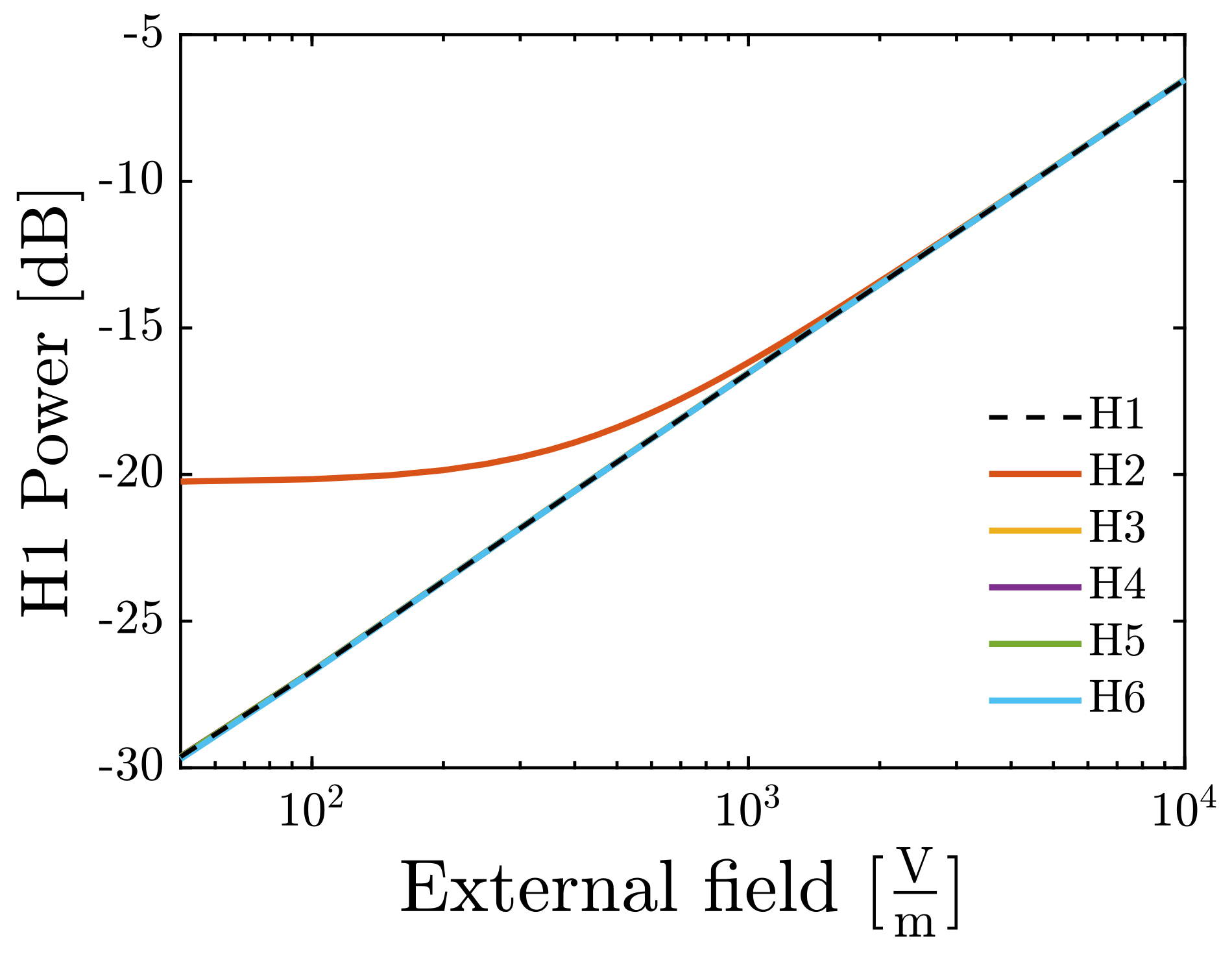
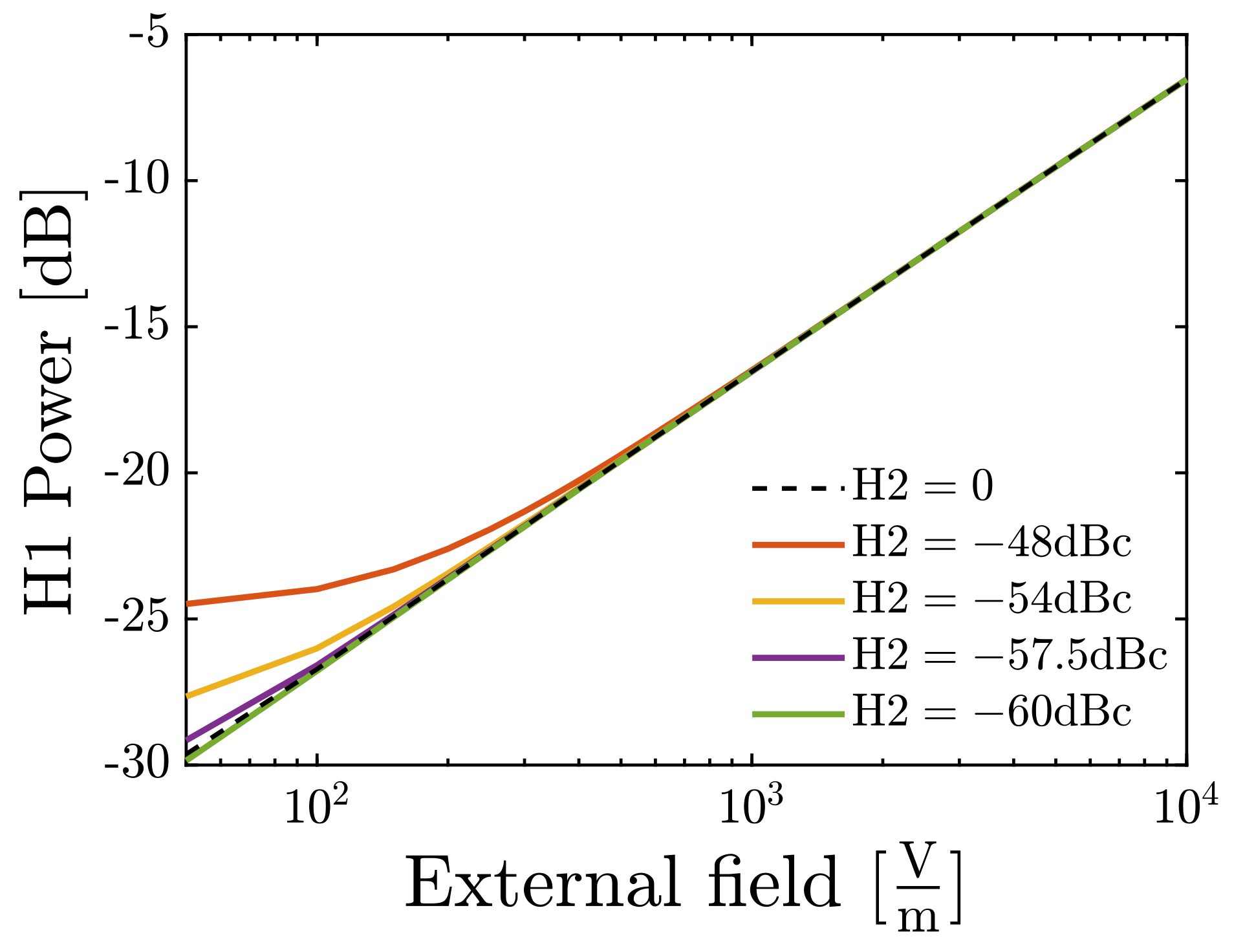
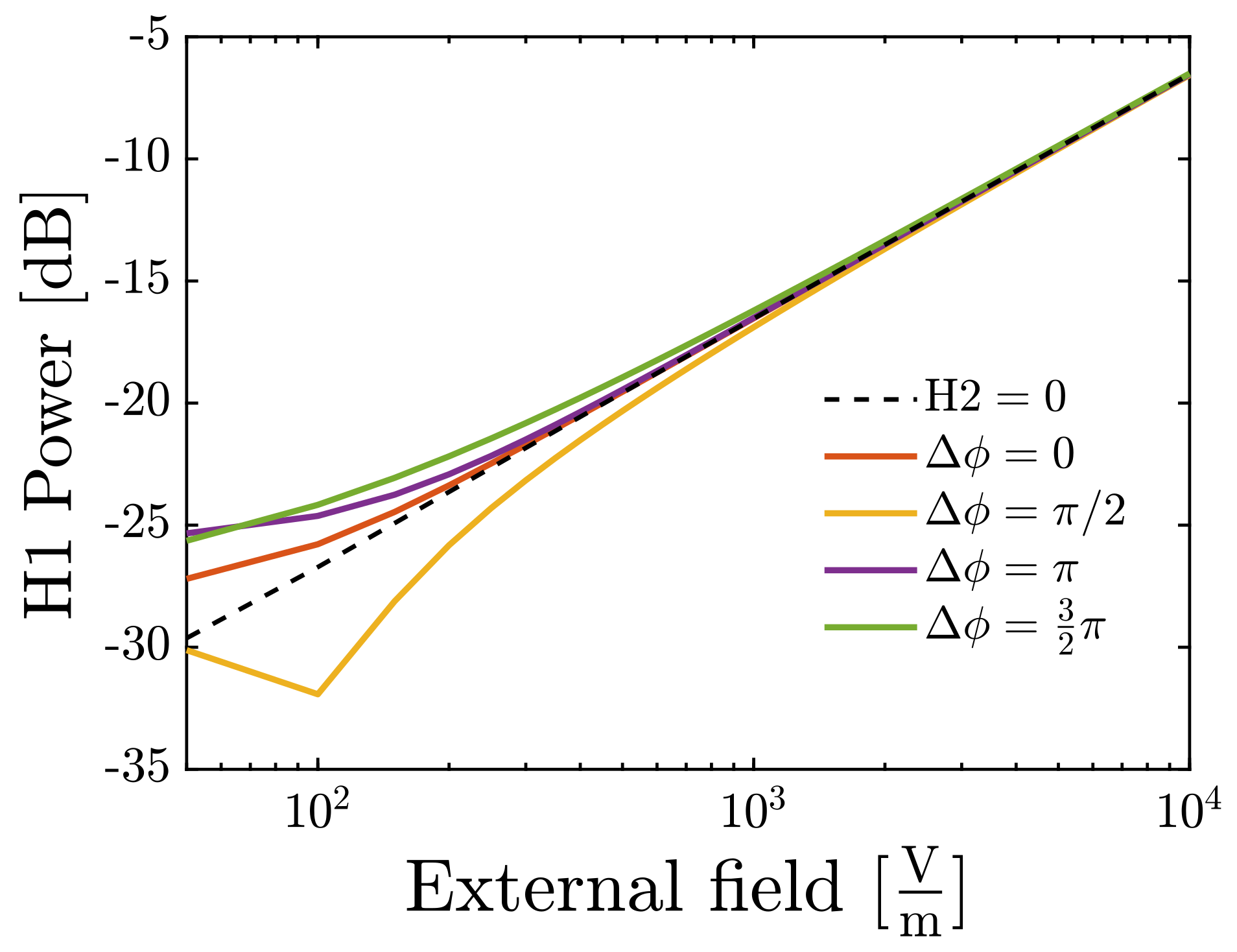
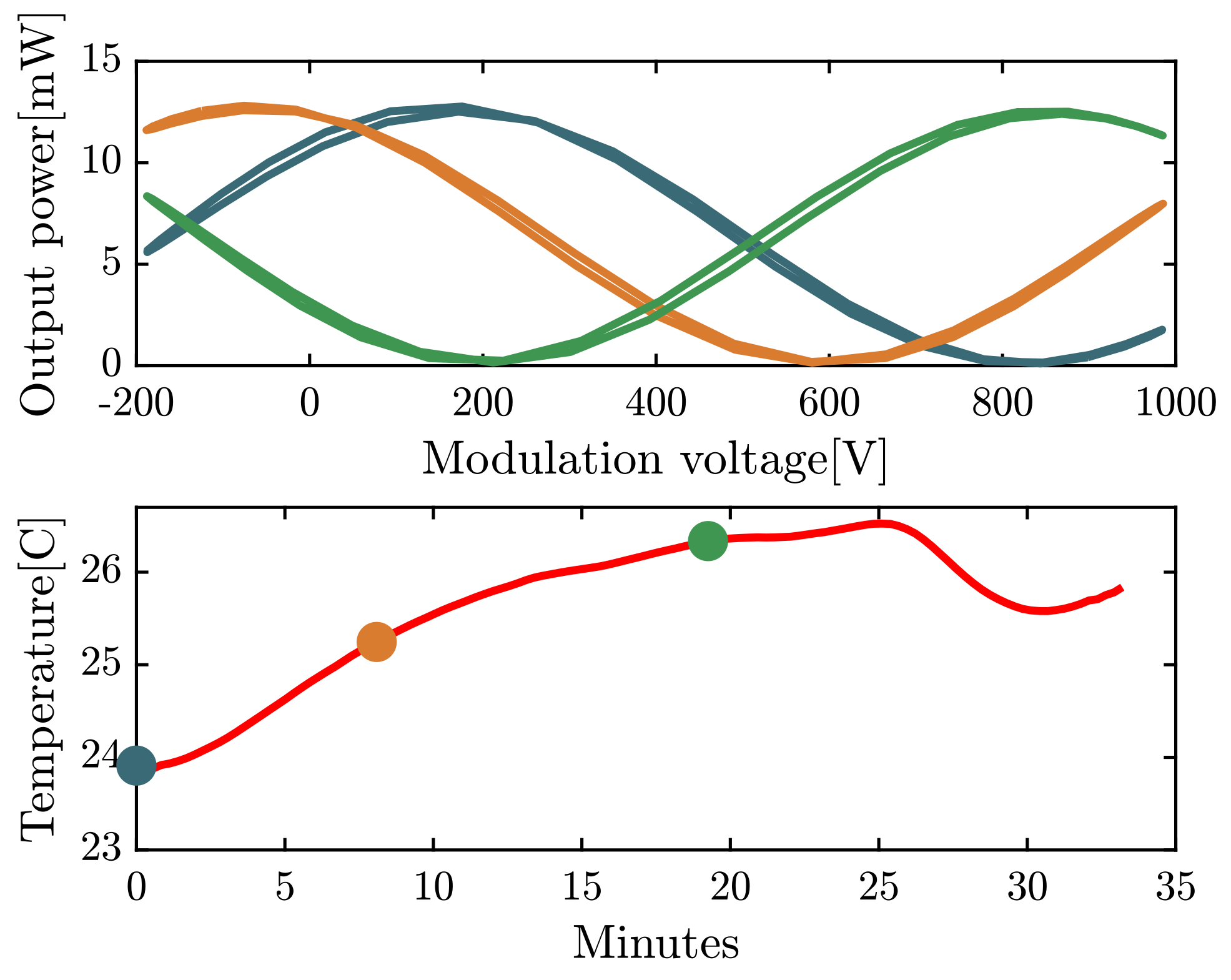

| Bias Crystal | Sensing Crystal | |
|---|---|---|
| Material | (5% doped) | |
| Lx [mm] | 3 | 5 |
| Ly [mm] | 40 | 50 |
| Lz [mm] | 3 | 2 |
| E [] | 159 | 203.9 |
Publisher’s Note: MDPI stays neutral with regard to jurisdictional claims in published maps and institutional affiliations. |
© 2022 by the authors. Licensee MDPI, Basel, Switzerland. This article is an open access article distributed under the terms and conditions of the Creative Commons Attribution (CC BY) license (https://creativecommons.org/licenses/by/4.0/).
Share and Cite
Cristiano, A.; Krupa, M.; Hill, R. Electro-Optic Sensor for Measuring Electrostatic Fields in the Frequency Domain. Appl. Sci. 2022, 12, 8544. https://doi.org/10.3390/app12178544
Cristiano A, Krupa M, Hill R. Electro-Optic Sensor for Measuring Electrostatic Fields in the Frequency Domain. Applied Sciences. 2022; 12(17):8544. https://doi.org/10.3390/app12178544
Chicago/Turabian StyleCristiano, Antonio, Michal Krupa, and Richard Hill. 2022. "Electro-Optic Sensor for Measuring Electrostatic Fields in the Frequency Domain" Applied Sciences 12, no. 17: 8544. https://doi.org/10.3390/app12178544







